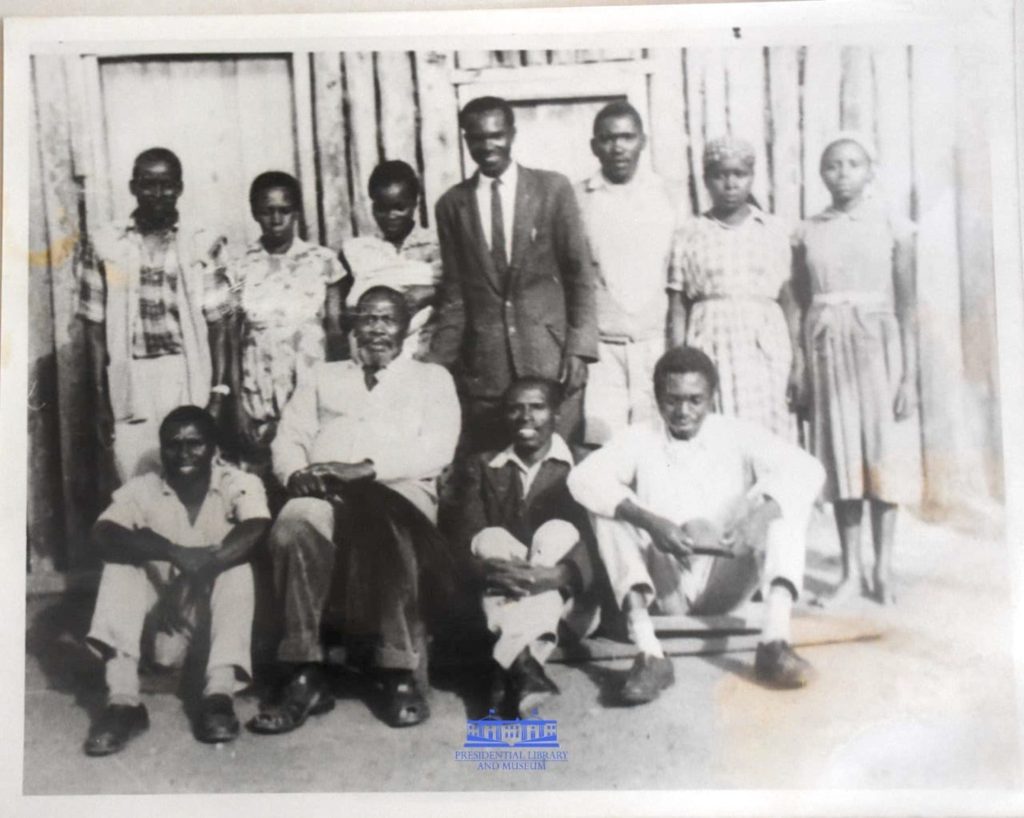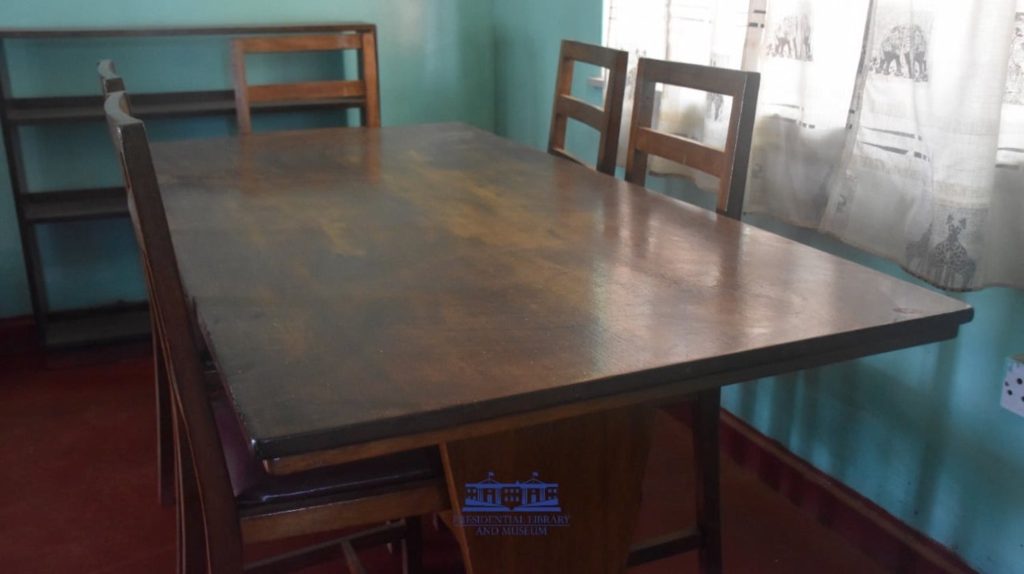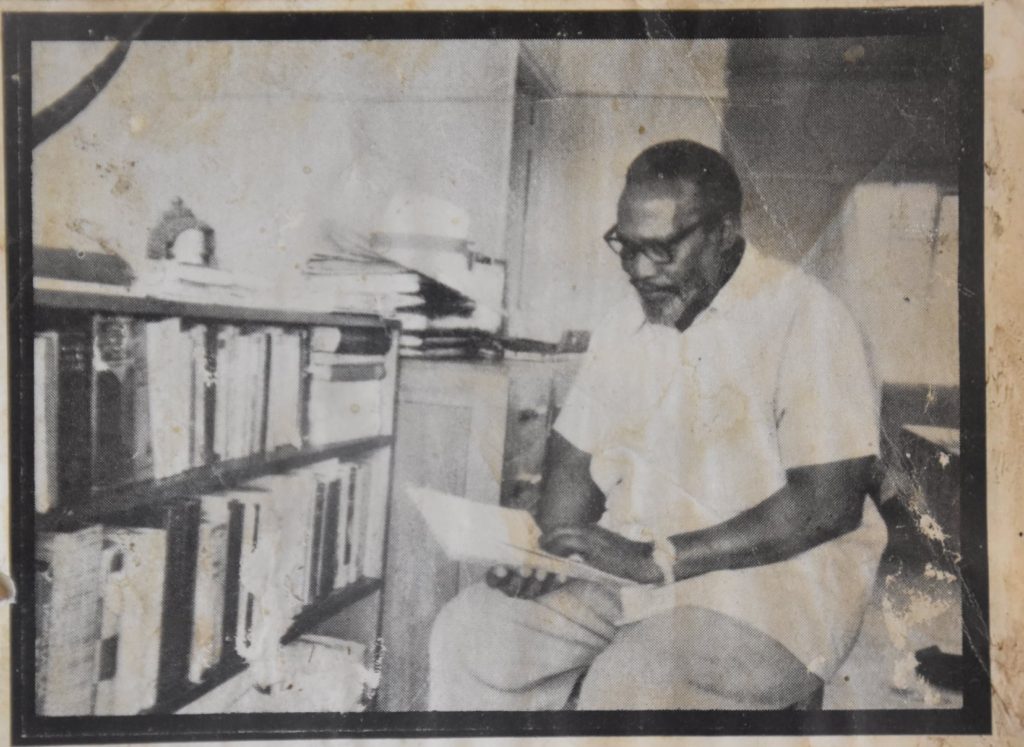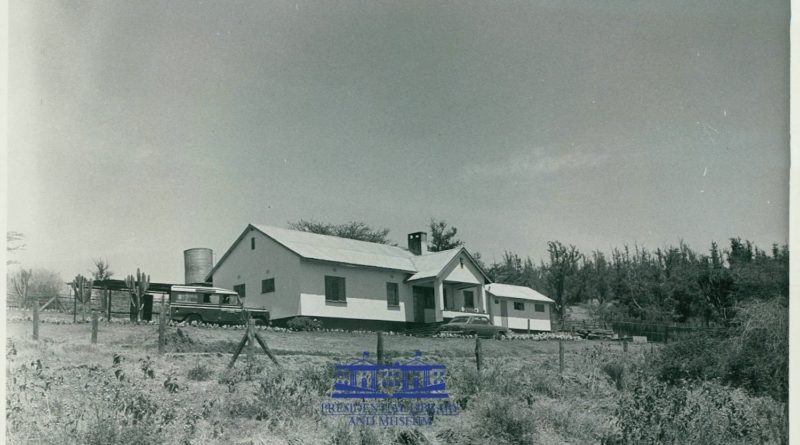Why the Story of Mzee Kenyatta’s Detention is Never Complete Without the Halfway House in Maralal
From Facebook/Presidential Library and Museums
The anniversary of the death of Kenya’s founding President Mzee Jomo Kenyatta will be marked tomorrow, 22nd August. Another anniversary in Mzee Kenyatta’s life history is 20th October, a national holiday to commemorate the detention of the Kapenguria Six that he was part of. The Kapenguria Six, who are immortalised in Kenya’s history, were Mzee Kenyatta, Kungu Karumba, Achieng Oneko, Paul Ngei, Bildad Kaggia and Fred Kubai.
The British accused them of organizing the Mau Mau war for freedom. August 21st is also another significant anniversary in Mzee Kenyatta’s life even though it is not commemorated publicly. It was the day in 1961 that the British colonial government released Kenyatta after detaining him in 1952. Mzee Kenyatta’s journey to freedom saw him moved from one jail to another in the harsh districts of Northern Kenya.
After their arrest on 20th October 1952, the Kapenguria Six were taken to Kapenguria for a trial that lasted 58 days. They were sentenced to seven years hard labour. Mzee Kenyatta was given an additional concurrent sentence of three years for the count of being a member of the organization. The British first took the six leaders to Lokitaung to serve the sentence.
In 1958, a letter about the inhumane conditions of the Lokitaung prison was leaked leading to international uproar and protests in Kenya. Following local and international pressure, the British transferred Mzee Kenyatta and his colleagues to Lodwar in 1959 where they were held under house arrest.
Even though they were held in separate houses, the conditions in Lodwar were equally deplorable as Mzee Kenyatta narrated in 1959 to President Daniel arap Moi. President Moi was then the Rift Valley Legco Representative and was allowed to visit Mzee Kenyatta and his colleagues in an official capacity after the plight of the detained leaders was discussed in the Legco.
On 11th April 1961, Mzee Kenyatta was again moved to Maralal where he was allowed the freedom of living with his family, moving freely within the town and interacting with locals but not exceeding in groups of ten people. Pictures of Mzee Kenyatta in Maralal show him with his family or in other relaxed situations like strolling in the town accompanied by his bodyguard. His detention in Maralal lasted only five months but it was eventful and remains one of the most talked about stints of his long detention.
But what many Kenyans may not be familiar with is that Mzee Kenyatta’s detention in Maralal was markedly different from the other long stints he served in Lokitaung and Lodwar for a reason. It was the last few months of his detention and by that time the British had realised that Mzee Kenyatta was going to be Kenya’s leader despite their plans to entice other leaders to form a government in his absence.
The British chose Maralal as a halfway house where they would keep Mzee Kenyatta as he served his last months in detention. There were many reasons that compelled the British to take Mzee Kenyatta to Maralal and allow him to enjoy more freedom than in Lokitaung and Lodwar. A timeline of the events preceding Mzee Kenyatta’s transfer to Maralal shows that it came shortly after the stalemate created by KANU’s insistence that his release should precede Kenya’s independence.
The tide against the British colonial empire in Africa started turning in the late 1950s. Ghana became the first African nation to free itself from the shackles of colonialism and the circumstances in Kenya were favouring independence. In 1959, the British lifted the restriction on the formation of political parties in Kenya and invited leaders to London for independence talks — famously known as the Lancaster House Conferences.
In 1960, the State of Emergency was lifted and the first Lancaster House Conference to discuss Kenya’s independence was held. The Colonial Secretary Ian Macleod admitted the inevitability of Kenya’s independence. In February 1961, a general election was held under a new Constitution that was drafted at the Lancaster House Conference. KANU, which had elected Mzee Kenyatta as its leader in absentia, won majority of the seats but refused to form a government until he is released.
Kenya’s first Vice President Jaramogi Oginga Odinga, who was at the time heading KANU together with Tom Mboya and Mbiyu Koinange, led calls for delaying Kenya’s independence until Mzee Kenyatta was released. Less than two months after KANU’s refusal to form a government, the British transferred Kenyatta to the halfway house in Maralal.
In preparation for Mzee Kenyatta’s transfer, the British hurriedly constructed a three bedroom house in Maralal. A doctor was also posted to the town and assigned to serve Mzee Kenyatta.The Maralal detention remains the most memorable partly because it was the most documented duration of Mzee Kenyatta’s incarceration.
His first interview with the media since his arrest in 1952 was in Maralal. His daughter, Margaret Kenyatta, was with him at the press conference. Many delegations from Kenya and other countries visited Mzee Kenyatta in this Northern Kenya town. Maralal is also important in Mzee Kenyatta’s history because of the important milestones in his own family that happened during the time. His daughters, Jenny and Kristina, started schooling at Maralal DEB School.
In 2007, President Uhuru Kenyatta, then a Member of Parliament, revealed that he was conceived in 1961 in the Maralal house now known as Kenyatta House. Mzee Kenyatta wrote the book Facing Mount Kenya when he lived in the house in Maralal. The title of the book is said to have been inspired by the location of the house from where one can see a glimpse of the tip of Mount on clear days.
Residents of Maralal, who were young in the 1950s, still recall when Mzee Kenyatta was detained in the town. He made many friends in Maralal, which in the 1950s was already a cosmopolitan town. According to the elderly residents, among his close friends were John Chiefly Cardovillis (a Greek businessman), Mzee Issa (a Somali businessman), Mzee Lekalja whose butchery he often visited and Mzee Wanyeri Kimomoru (a cobbler hailing from Nyeri whose stall Kenyatta frequently visited to fix his shoes).
Lekalja is reputed to have been Mzee Kenyatta’s personal post office as he used to deliver his correspondences. The colonial detention centers in Kapenguria, Lokitaung, Lodwar and Maralal where Kenyatta and the other leaders were held by the British are now known as Kenyatta Houses and are under the management of the National Museums of Kenya.
The colonial government moved Mzee Kenyatta to his Gatundu home on 14th August where he was confined and restricted from making political statements for one week. On 21 August. he was finally given full freedom. In one of the first press interviews after his release, a journalist asked Mzee Kenyatta what his philosophy was and Kenyatta replied “love thy neighbour.” The journalist asked him who he considered a neighbour and Kenyatta replied “the world is my neighbour “.

Living Room, 2020 
Jomo Kenyatta receiving visitors, 1961 
Children’s Bedroom, 2020 
Dining area, 2020 
Kenyatta House, 2020 
Jomo Kenyatta in his small library, 1961 

Maralal Township 19677





